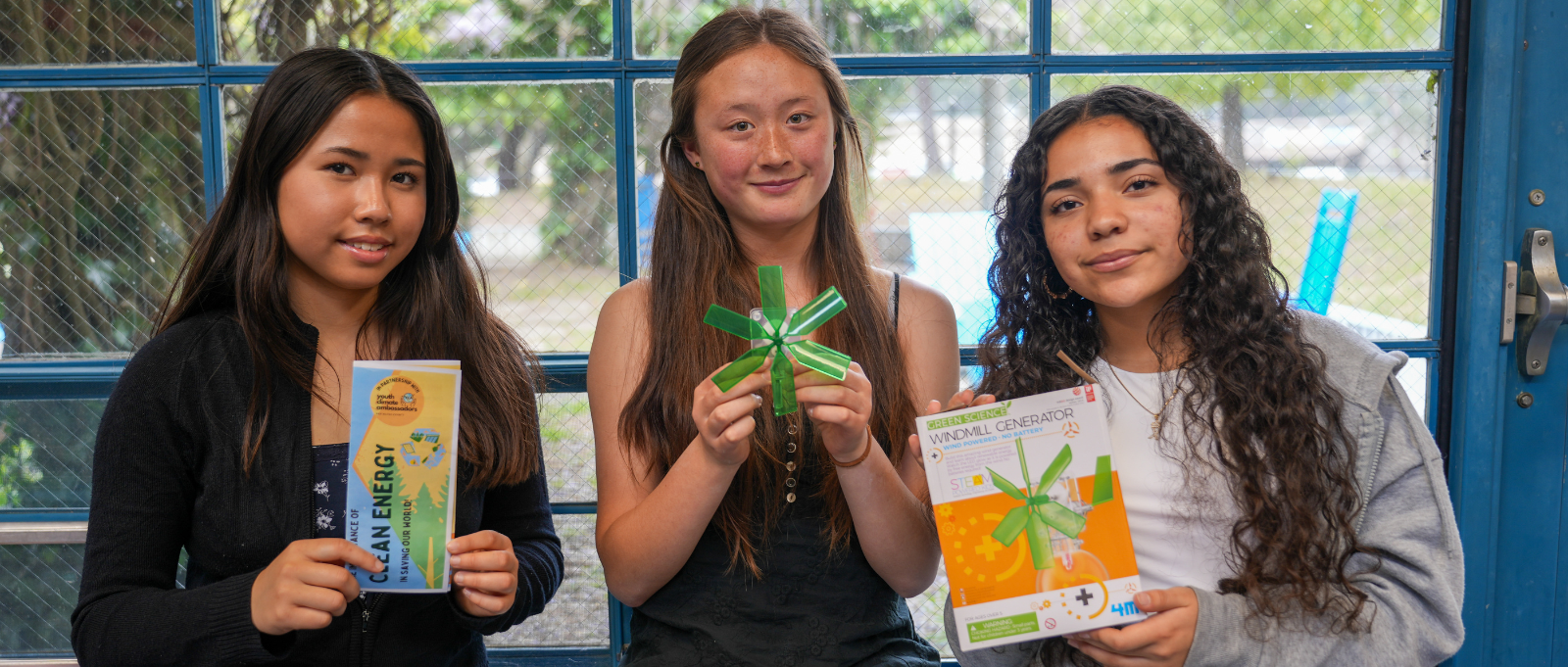September 2, 2025
Topic
As climate change intensifies, California’s nearly 10,000 public schools have a powerful opportunity to take transformative, local action. Schools are trusted institutions embedded in the local community, providing essential gathering spaces, health services, and emergency response needs. However, as some of the largest land owners in California, school districts are also a significant source of greenhouse gas emissions.
Through partnerships with local governments, schools can decrease their impact on the environment. When cities and counties partner with schools, they can accelerate climate action solutions, strengthen community resilience, and engage the next generation of environmental leaders.
Local government & school partnerships in San Mateo County
For decades, the County of San Mateo has collaborated with schools to implement environmental sustainability practices. In 2018, the San Mateo County Office of Education (SMCOE), local electricity provider Peninsula Clean Energy (PCE), and the San Mateo County Sustainability Department began working together in a coordinated effort to support schools. This multi-agency collaboration has engaged schools in infusing climate action initiatives into their campus, curriculum, community, and culture.
Campus: Even though cities and counties do not have oversight over schools’ greenhouse gas emissions, local governments can provide assistance with facilities planning, technical expertise, and financial support for decarbonizing operations.
SMCOE, with support from the Sustainability Department’s San Mateo County Energy Watch Program, has collected comprehensive facilities data at most K-12 public schools in the county. As a result of the findings, SMCOE provides school districts with individualized recommendations and referrals for incentives and technical assistance offered by PCE and PG&E. SMCOE also coordinates webinars to inform school district chief business officers about energy programs, and the Sustainability Department periodically hosts facilities staff from different municipalities and school districts to share information with each other.
Curriculum: In addition to supporting changes on school campuses, local governments can encourage students’ learning and engagement around climate change by offering funding, resources, and subject matter expertise. PCE, SMCOE, the Sustainability Department, and the Citizens Environmental Council collaborate on the Youth Climate Ambassadors Program, a seven-month leadership program for high school students that fosters youth-led action to reduce greenhouse gas emissions and cultivate resilient, sustainable communities. These organizations also train teachers on clean energy curriculum and develop field trips focused on climate solutions.
Community & culture: Some of the most successful methods for inspiring climate action across districts are recognizing school leadership and communicating best practices. SMCOE convenes school administrators, teachers, and other stakeholders at an annual summit to share resources and award schools for exemplary projects related to facilities decarbonization and clean energy curriculum. In addition to these efforts to recognize schools, an Environmental Youth Leadership Summit is held annually to inspire students to take action in their own communities.
Resources to build partnerships in your community
Ready to get started? Building partnerships with your local schools can unlock new pathways for climate action and community resilience. Right now, at least 20 counties in the state of California are well positioned to form similar partnerships between local governments and schools. Together, local governments can position schools as critical partners and community leaders in climate action.





